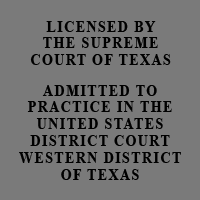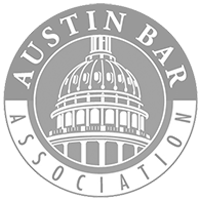Texas Rollover Crash Death Lawyer Handles Fatal Rollover Crash Lawsuits, Defective Automobile Roof Lawsuits, Deadly Defective SUV Rollover Crash Lawsuits, Defective SUV Rollover Crash Lawsuits, and Fatal Roof Design Rollover Lawsuits by Texas Rollover Crash Death Lawyer Jason S. Coomer
Many different types of automobile defects can cause a fatal crash to occur or a minor accident to become a catastrophic injury or deadly accident including defective SUV design, defective SUV rollover design, defective SUV roof safety design, defective SUV tires, defective steering column design, and defective SUV child restrain design. In the aftermath of a serious automobile crash or deadly SUV rollover collision, it is extremely important to investigate how the rollover crash occurred and if a vehicle defect was the cause of the rollover crash or caused a minor accident to become a catastrophic injury or deadly crash.
If you have lost a loved one in a fatal rollover crash or have been seriously injured by a defective SUV or other automobile with defective brakes, defective roof design, defective accelerator, defective rollover design, defective tires, or other defective crashworthiness features, feel free to submit an inquiry or send an e-mail to Texas Deadly Rollover Crash lawyer Jason Coomer.
Automobile Accident Crashworthiness Safety Belt Lawsuits, Fatal Crash Rollover Lawsuits, Fatal SUV Rollover Crash Crashworthiness Unsafe Roof Collapse Lawsuits and Fatal Automobile Rollover Crash Crashworthiness Lawsuits (Automobile Defective Crashworthiness Product Liability Lawsuits)
Federal Motor Vehicle Safety Standards set minimum performance requirements for those vehicle parts that protect drivers and passengers from death or serious injury in the event of a crash (air bags, safety belts, child restraints, energy absorbing steering columns, motorcycle helmets). These vehicle performance requirements, defective automobile crashworthiness lawsuits, manufacturer safety policies, and the investigation efforts of the The National Highway Traffic Safety Administration are important to identify unsafe vehicles with defective airbags, defective seat belts, defective child restraints, defective roof design, defective designs that cause vehicle fires, and defective designs that cause vehicle rollovers.
Fatal Rollover Crash Defective Design Lawsuits, Catastrophic Injury Defective Design Rollover Lawsuits, Fatal Roof Collapse Defective Design Lawsuits, Catastrophic Injury Defective Roof Design Lawsuits, and Automobile Accident Collapsed Roof Lawsuits (Product Liability Defective Design Roof Collapse Lawsuits)
Manufacturers have known for decades that vehicles roll over in reasonably foreseeable accidents. With the rise in popularity of SUVs and pick-up trucks, the number of people who are susceptible to vehicles rolling over has increased significantly over the last 20 years. However, in light of the fact that more people are affected by rollovers, most vehicle manufacturers have not increased the strength of the roofs in their SUVs and pick-ups.
Roof crush, or “loss of occupant survival space,” creates many problems for occupants in the vehicle. First, it rapidly reduces the space in the vehicle for the occupant. This will increase the risk that the occupant will receive a spinal cord compression injury. Second, roof deformation does not happen straight down but rather down and in toward the occupant. This significantly increases the likelihood that a properly belted occupant will be partially ejected out of the vehicle during the roll sequence. Typically the force of the roll coupled with the glass shattering out of the window, the roof crushing down and inward and the seatbelt not properly securing the occupant to the seat will result in the occupant having his or her head and/or arm and shoulder out of the vehicle during the roll. As will be discussed below, there are other ways to keep an occupant in the vehicle during a roll but a roof that stays in place during a roll reduces the risk of a person being partially ejected or receiving a compression injury even without the other safety measures.
The most common injuries associated with roof crush are spinal cord compression injuries and death. Many automobile manufacturers have taken the position, especially in spinal cord compression injury cases, that the injury was caused by the occupant “diving” into the roof. The term “diving” comes from the analogy of swimming pool diving injuries to compression injuries sustained in rollovers. With this defense, the automobile manufacturers maintain the injury occurs before the roof crushes in by the head moving toward the roof until it can go no further and the weight of the occupant’s body moving toward the head until there is such loading on the neck that a spinal injury occurs. Vehicle manufactures allege through testing and expert testimony that when a vehicle is inverted, the forces of gravity and the roll sequence will lead to an occupants head contacting the roof without any roof crush. They allege that there is no alternative roof design that can stop this from happening.
Partial ejections are also common in rollover accidents because the roof crushes down and in toward the occupant. When the roof crushes down and in, the force of the roll causes the occupant’s head to get outside the plane of the vehicle. In a partial ejection, it is common for an occupant to hit his or her head against the ground or pavement or get it caught between the car and ground during the roll. Vehicle manufacturers often argue that no matter the strength of the roof, a belted occupant can get their head out of the car during a roll. But if you keep the roof from deforming more than 3 inches during a rollover, restrained and contained occupants cannot get their heads out of the plane of the vehicle and sustain a catastrophic injury. The most important series of tests that address the causal relationship between occupant injuries and roof deformation are Malibu I and Malibu II. These were dolly rollover tests performed with Chevrolet Malibus (some with production roofs and others with reinforced roofs that did not deform during the rollovers). The vehicles were equipped with Hybrid III test dummies (in Malibu I the dummies were unrestrained and in Malibu II the dummies were properly belted). Vehicle manufacturers use the Malibu tests to argue the roof crush does not actually cause the injury.
The test data demonstrates, however, that there is a causative relationship between the strength of the roof and significant neck loading. Analysis of the Malibu testing and other testing that has been performed by the automotive industry and others is beyond the scope of this paper, but it is important for anybody handling a roof crush case to be well-versed in all of this testing. When analyzing a roof crush case, it is important to analyze the extent of the roof deformation. This will require measurements that can be done by a trained attorney or investigator. Further, as discussed above, the accident reconstruction will provide much information that will allow an analysis of a roof crush case. Trip speed, roll velocity, number of rolls, drop height and the type of roll (barrel, end over end or football) are all needed to analyze whether or not a safer alternative design existed that would have kept the occupant compartment space preserved during the roll.
United States and Texas Fatal Rollover Crash Lawyers for Deadly Rollover Fatal Crash Lawsuits
As a Texas Fatal Rollover Crash, Jason Coomer, works on Texas Fatal Rollover Lawsuits involving serious injuries and fatal automobile collisions all over the State of Texas and throughout the United States. In working on Texas Fatal Rollover Crash Law Suits, Jason Coomer commonly works with other Texas Fatal Crash Rollover Lawyers throughout Texas and the United States including Houston Fatal Roll Over Crash Lawyers, Dallas Fatal Defective Roof Collapse Rollover Lawyers, El Paso Defective SUV Fatal Rollover Crash Lawyers, and San Antonio Fatal Crash Rollover Accident Lawyers.
In working with other Defective Crashworthiness Fatal Crash Rollover Lawyers, he is able to more efficiently investigate and litigate catastrophic injury and fatal automobile crash and deadly car wreck lawsuits that are caused by defective automobile design or parts.
Texas Fatal Crash Rollover lawyer, Jason S. Coomer, helps individuals that have been seriously injured and the families of people that have been killed as a result of defective air bags, defective rollover design, defective roof design, defective safety restraint design, defective steering column design, or other a defective crashworthiness automobile design or part. If you have a question about a fatal rollover crash lawsuit or a SUV rollover crash roof collapse lawsuit, contact Austin Texas Fatal Rollover Crash lawyer Jason Coomer.
Feel Free to Contact Us with any Questions
Associations




